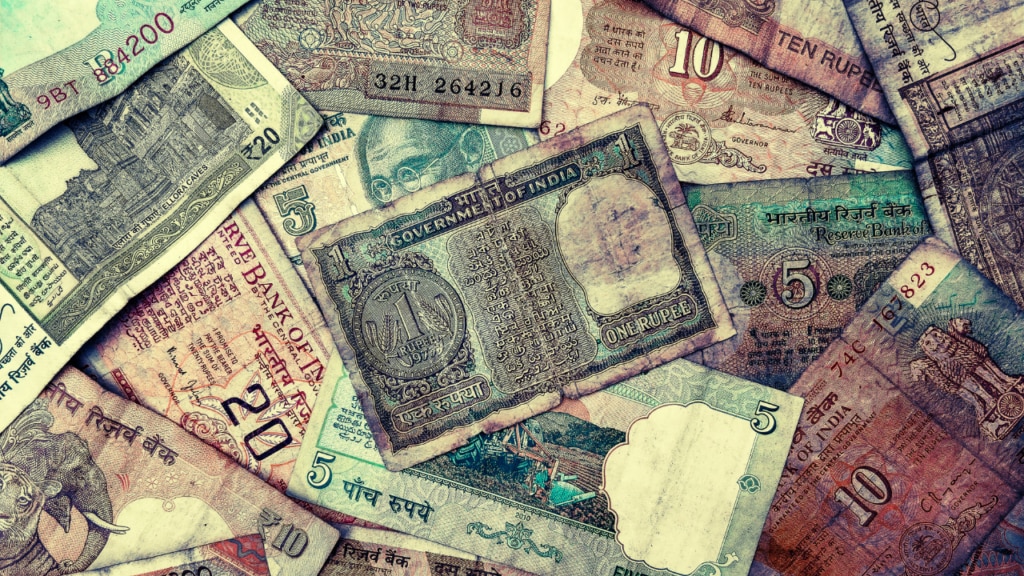Awwab Saad Hayat & Tahmeed Ahmad, Ahmadiyya Archive & Research Centre

Maktubat-e-Ahmad is a collection of letters by the Promised Messiahas from 1883 to 1908 addressed to various individuals. These letters serve as a valuable historical and spiritual record for scholars and members of the Jamaat alike.
One such letter was addressed to Hazrat Hakim Maulvi Noor-ud-Dinra, which some have used to raise baseless and unfounded allegations, as will be proved in the course of this article.
On 11 July 1887, the Promised Messiahas wrote to Hazrat Hakim Maulvi Noor-ud-Dinra, mentioning he had received half of a 500-rupee note and requested the other half be sent securely by registered mail. In a follow-up letter, he confirmed receiving the full amount and expressed deep gratitude for the support during a difficult time, praying for Allah’s blessings upon him. (Maktubat-e-Ahmad [2008], Vol. 2, pp. 41-42) Similar mentions of “half-cut notes” are found in other letters.
Allegations have surfaced online, falsely accusing Hazrat Mirza Ghulam Ahmadas and Hazrat Hakim Maulvi Noor-ud-Dinra of fraud, founded on letters exchanged in 1887 concerning the sending of a 500-rupee note in two halves for security during the monsoon season. The site claims that this manner, used to avoid postal theft and high transfer fees, was a deceitful trick. It mocks the act as a calculated fraud, despite it being a practical solution at the time. These baseless allegations are built on misinterpretation and a lack of understanding of historical context and intention.
A history of half-cut notes: A global practice of secure money transfers
The practice of cutting notes was a way to ensure secure money transfers through unreliable postal systems.
“I duly received yours of the 7th inclosing 4 half bills of the U.S. bank. (Norfolk, May 13, 1801)”
The line above is a receipt for a purchase made by the then US president, Thomas Jefferson. The president who would be featured on the 2 dollar bill had a peculiar practice: he would tear banknotes in half and mail them separately to avoid what he called “the infidelities of the post office”. (Thomas Jefferson on Wine, pp. 267-268)
This method of cutting banknotes is not limited to the president or just the US; we find similar records worldwide. A widow living in Poole, Dorset, southern England, requests her banker for £92 on 24 November 1806. “She asked specifically that the money be sent directly to her, in the form of half bank notes. This was a common practice: bank notes would be cut in half, one set of halves mailed away, and after their safe receipt the other halves would be sent off to join them.” (Jane Austen Annual Report 2010, p. 106)
“Frequent references appear in the local press to forgery and theft of notes, from the odd pickpocket to the thieves who broke in and stole almost the entire funds of the West of England Bank. A precaution against loss when sending notes by coach was to cut the notes in half. One half was sent by one vehicle and the second half by another, and then the halves were rejoined when they had arrived safely.” (Banks and banknotes of Exeter, 1769-1906 : a study of provincial banking with a standard list of banks, banknotes, and partnerships, p. 20)
Background

According to Ian Angus in Paper Money, this practice goes back to the earliest days of the Bank of England. “As a further precaution against fraud these marbled paper bank notes were cut in half and only one half given to the customer. When the note came back to the bank it could be checked against the other half to prove that it was genuine. None of these marbled notes has survived, but the practice of cutting notes in half continued for some time. Later notes may be found with curved cuts between the two halves as well as a printed design. A watermark was adopted as a security measure in 1697.” (Paper money, p. 15)
The infidelities of the post office
The need for splitting notes arose yet again a few decades later due to a variety of reasons. As early as 1782, the authorities were urging people to send banknotes in halves. (Morning Post, 10 January 1899)
Take, for example, Thomas Jefferson’s comments about “the infidelities of the post office”. In 1862, The Times published a lengthy article on the topic, reporting that the post office was discouraging people from sending money by mail. Various incidents were highlighted, including a bag full of post falling into a sewer, envelopes being stolen by ravens, and children pouring water into the letterbox. However, the most significant issue was poverty. Many postal workers came from impoverished households, making even a small amount of money tempting to them. Although the post office implemented measures to address this issue, they could not provide a guarantee of safety for the mail. (St. Neots Chronicle and Advertiser, 31 May 1862)
By 1868, this became the most reliable way of sending cash; newspapers would request that their correspondents only send half-notes. (Dublin Evening Mail, 20 June 1868)
Some would argue that, from a moral standpoint, “the man who sends a divided bank-note in two separate enclosures, is literally doing things by halved” (Commonwealth (Glasgow), 5 January 1856)
However, this was promptly met with a much stronger slogan, published by nearly every newspaper at the time: “Never do things by halves, except when you send us bank-notes by post.” (The Punch, 18 May 1872)
By 1873, the custom of sending these in halves, sealed in different covers, “had become habitual,” reports the Daily Telegraph & Courier (24 July 1873)
How to cut a note in half
Eventually, due to the sheer popularity or necessity of sending banknotes in halves, the post office began publishing instructions on how this system worked. Headings such as “The following has been issued by order of the Postmaster-General” would follow up with detailed instructions on the entire process. (Yorkshire Post and Leeds Intelligencer, 29 May 1872)
One of the most straightforward explanations I could find is from the popular newspaper Liverpool Echo, or as it was known, the Echo. A reporter from the Echo interviewed an authority on finance. One of the questions was whether or not sending half-notes was the best way of sending cash. He responded by explaining the whole process in great detail:
“Oh, yes,” said the authority. “The best way to send large sums of money through the post is to tear the notes in half and send the halves by different mail.
“Obviously, this prevents theft in transit. The first batch of half notes is, of course, valueless, and the second batch is valueless too. But when the recipient has both batches and can, therefore, present the full notes, quite whole and all there, he can cash them at the bank in the usual way.
“Thus, loss or robbery is guarded against. If one batch of halves were stolen, it would probably be possible, after a certain lapse of time, to make arrangements for the negotiation of the other halves at the bank.
“A bank would not cash half a note, because, if it started doing that, it would soon find itself cashing both halves at different times and paying twice on each note.
“Sometimes a person going abroad takes half notes with him to prevent robbery en route, and has the corresponding halves sent on by another boat. (Liverpool Echo, 9 May 1929)
Conclusion
The accusations against the Promised Messiahas are, in fact, a “half-truth” at best! Sending currency in halves was a common practice for secure transactions, not a scheme for fraud. Those who try to “cut” the truth are simply missing the whole picture, as his letters reflect trust, sacrifice and dedication to a noble cause.

